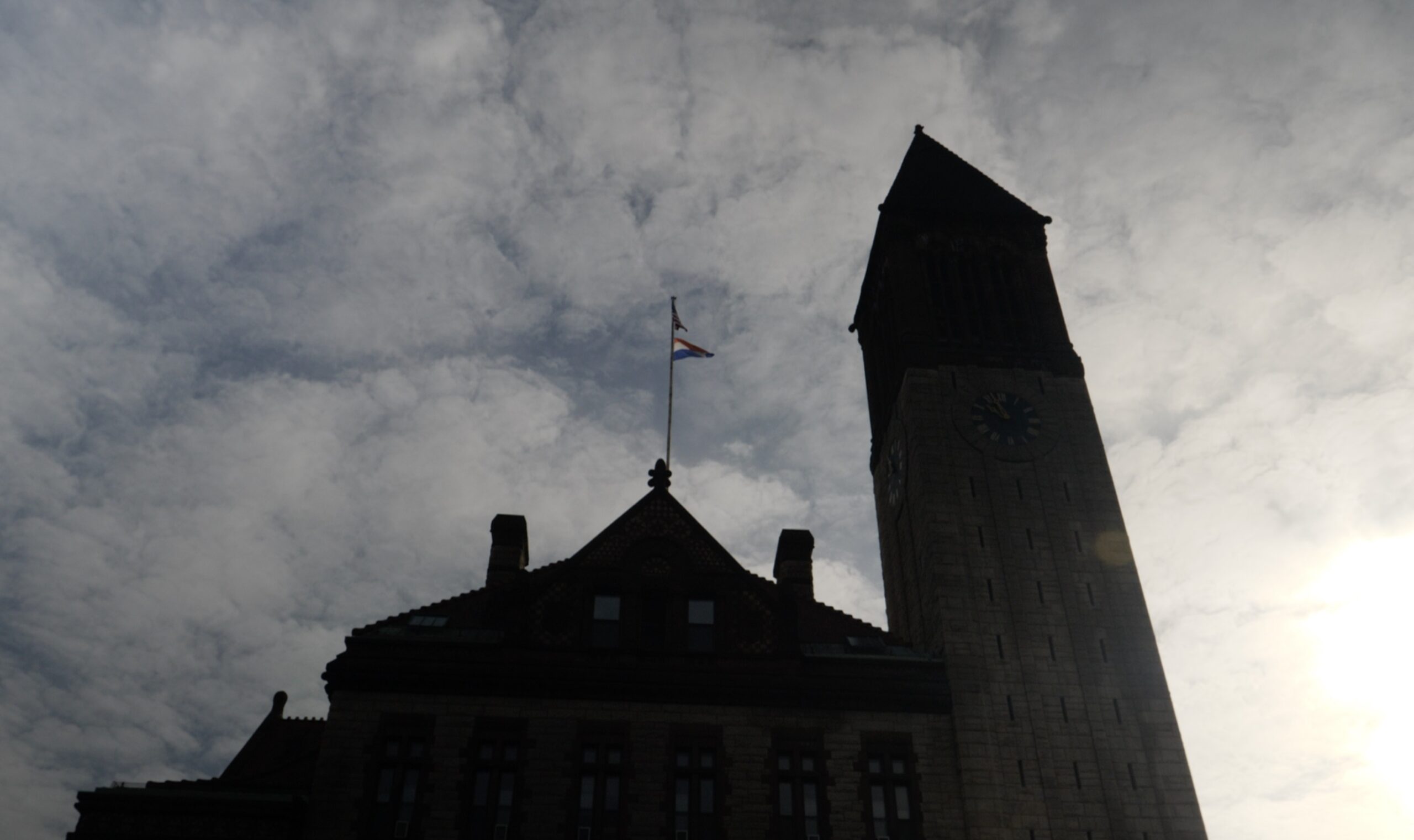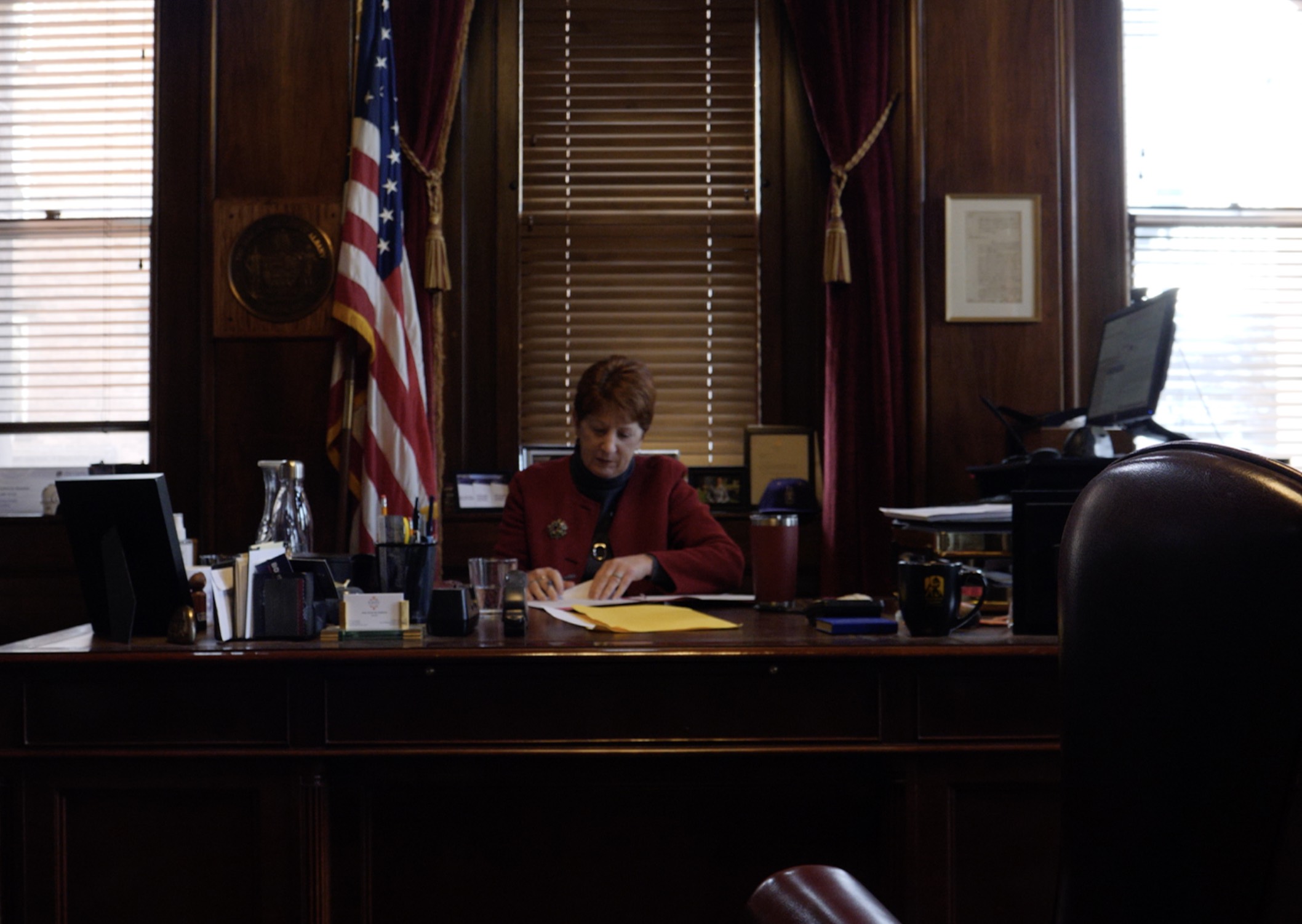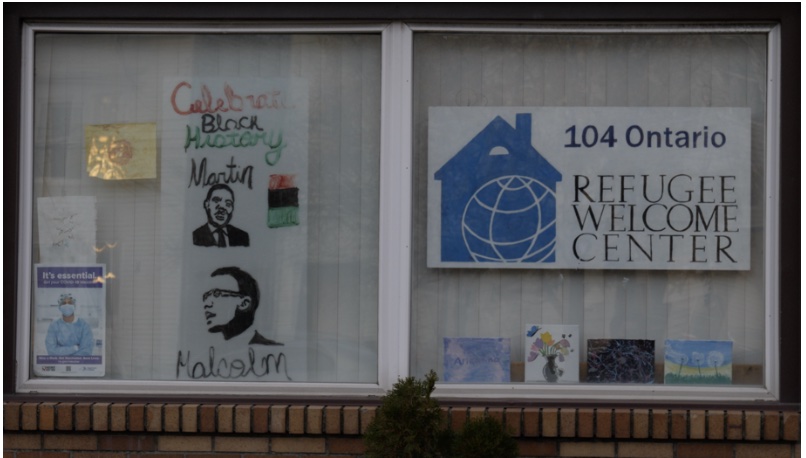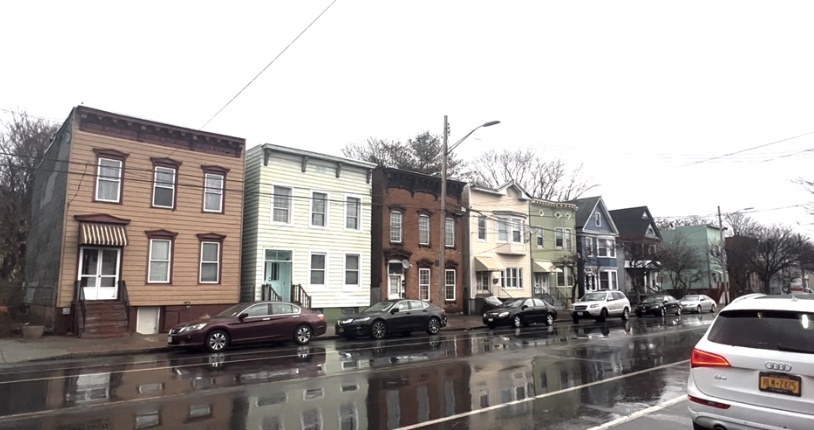The Sanctuary City of Albany
By Alexa Sarci
With more than 21,000 migrants arriving in New York City since the spring, the temporary housing system has been strained, with shelters and motels pushed to their limits. That is why some migrants have skipped the city altogether, venturing three hours north to New York’s capital, Albany.

Mayor Kathy Sheehan’s office building. Photo by Alexa Sarci.
Historically, Albany has always been a town of migrants, with the U.S. Committee for Refugees and Immigrants welcoming more than 4,500 refugees. A majority in the area are coming from Afghanistan, Iraq, Syria, and other Middle Eastern countries. When the Taliban took control over Kabul last year, more than 400 Afghans fled to Albany.
Albany is also considered one of the most affordable places to live in Upstate New York, a key factor for attracting refugees. Many refugees find Upstate New York more appealing than the city with more than 80% of refugees who’ve come to New York since 2002 arriving and settled upstate.
“I think it is easier than we think it is to welcome the refugees here. We certainly are a sanctuary city,” says Common Council member Joyce Love.
When Mayor Kathy Sheehan declared Albany a sanctuary city in September, a lot of pressure came with that declaration. Even though Albany has numerous nonprofit organizations similar to NYC that aid refugees, what they don’t have, always, is a community not only welcoming refugees but wanting them.

Mayor Kathy Sheehan in her office. Photo by Alexa Sarci.
More than one million Afghans have fled Afghanistan since the Taliban’s takeover last year. One of the recently arrived refugees lives in the neighborhood of West Hill in Albany. She left Afghanistan three months ago out of fear because she worked for the U.S. government in Kabul, where the Taliban could murder her for her involvement. The number of refugees from Afghanistan resettling in Albany seems to be increasing with the initial projection last year being only 100. Today there are more than 400.
“Things were a bit difficult and a bit stressful for us because in the first week when I was here, I was totally depressed, and I was thinking, why did I come here? Why did I do this? I should not be doing this because my country is, sorry I’m not saying that it is a bad place, but things were great there,” said S, who declined to give her full name.
When S first arrived, her living conditions were more spartan than what she and her husband were used to in Afghanistan, coming from a comfortable middle-class home.
She was taken by surprise and disbelief when the apartment she arrived at in West Hill had little to no furniture and a lack of essentials. S was frustrated by the conditions to which she not only would have to live in but get accustomed to in a completely foreign place that is now home.
With the assimilation process already being extremely difficult, this has just added to the stress S has been battling. The first night at their new home, S and her husband barely slept due to the conditions of the apartment and emotions running high.
“When we reached here, things were totally different and scary. And we were afraid of new things, new people’s speech, especially the lack of information related to the city because we were not here based on our choices,” said S.
Just recently, S received some essentials such as a bed frame, a couch, and even a T.V. from the Refugee Welcome Center. It is still a long way from turning her house into a home, but it is a start.
“We had houses in Kabul. Believe me. We had better than this. Every person here is suffering for the things which they left in Afghanistan. If our country was not in this situation which it is now dealing with that, I would never come to any country, especially to the U.S.,” said S.
Even though Albany is overwhelmed with the abundance of recent migrants, just like New York City, policymakers still believe Albany offers more for them.
“Is it easy? No, it is not easy. Lots of resources are needed. We’ve got those for education, legal, and employment. But yes, I think Upstate is easier to navigate. In NYC, it is 8 million people. It is easier to get lost there, whereas here, it is more of a one-on-one,” said Albany Assemblymember Pat Fahy.
Unlike other cities in the United States, Albany wants the refugees to stay and expects them to by providing affordable housing, like where S is staying in West Hill. The city of Albany wants refugees to transform these impoverished neighborhoods into a tight-knit community.
Sheehan explained the process they are utilizing.
“We want to be able to ensure that residents who come here from all over are able to not only find a place to rent in the city of Albany, but then as they work and as they’re able to accumulate some savings to be able to have them become homeowners in the city of Albany.”
For Sheehan, young migrants offer value to the community because Albany has an aging population.
“I think small cities have two really big benefits; one being that we have small, close-knit community-based organizations that want to do this work and have done this work at many levels for decades and decades,” said Sheehan.
One close-knit, community-based, nonprofit organization is the Refugee Welcome Center located in West Hill, where many of the recently arrived refugees are staying.

Refugee Welcome Center. Photo by Alexa Sarci.
RWC welcomes all immigrants and refugees to Albany and helps connect individuals and families with support services, resources, and safe housing to adjust to the new area they are living in.
Tim Doherty is the hands-on CEO and Founder of RWC, being there almost every day and knowing the majority of refugees in the area by name. Specifically, Doherty is helping alleviate the problem of housing in Albany.
“We’ve become a go to area, because if something’s wrong, we’re there to fix it. The rent is affordable. It’s a fairly secure area,” said Doherty.
Due to the 2008 mortgage crisis, the area of West Hill was hit hard. As a result, many of the houses have been vacant for years, leading to the deterioration of the properties and the highest vacancy rates in Albany.
“After that recession of ’09, everything started going vacant. We had 22 houses on this block. When I got in there two thirds were homeowner occupied, which is the ideal. Within two years from 2012 to 2014. It reversed and it went two thirds vacant. Everybody just left. If they got a foreclosure notice from the county. They were like I’m out,” said Doherty.
But because these houses and apartments are empty, they can be utilized by newly arrived refugees and immigrants. West Hill though is one of Albany’s most dangerous neighborhoods, having 2,842 violent crimes per 100,000 people, 210% higher than the national average.

Exterior of West Hill. Photo by Alexa Sarci.
This has a detrimental effect on locals, especially the refugee youth. In one instance, a child found a live gun in the street. Thinking it was a toy gun, he pointed it at his mother. According to Love, the interaction traumatized not only the mother but the boy as well.
Nonetheless, West Hill is where most refugees live, and Doherty has been helping accelerate the process of getting the houses ready for tenants.
“Owners are losing money on these clunkers, and they can’t get tenants that are gonna stay. It’s just. It’s just a downward spiral,” said Doherty. “So, I’ll talk with the landlord. I’ll say I’ll rent your place. And then I’ll sublet, and I’m an onsite very inexpensive property manager,” said Doherty.
Additionally, with the funding from donors of RWC, they are renovating and restoring houses in the neighborhood. The house they are working on is more than a hundred years old and has been ripped down to the studs. The turnaround rate is about five to six weeks if there are no funding issues. The home will be done by the end of January and will house an Afghani family of twelve.
Although Doherty is doing his best to transform the neighborhood of West Hill, there are only so many houses he can transform and people he can house with the funds allocated to RWC. As a result, many refugees are still in limbo, waiting for permanent housing and proper resources.
With RWC being a nonprofit organization and one of the smaller centers in Albany, their funds aren’t as robust as others. RWC is able to get grants, contributions and use some personal funds. With their expenses last year being $285,700 and a $294,394 revenue they only have an extra $8,694 to use.
Despite the fact that Albany has declared itself a sanctuary city and is welcoming migrants, the city doesn’t always have enough resources for every new arrival.
“Don’t bring more people when you don’t have the resources to help. It is not fair. Even if you are an animal, you need a bed, a roof to sleep on,” says S.